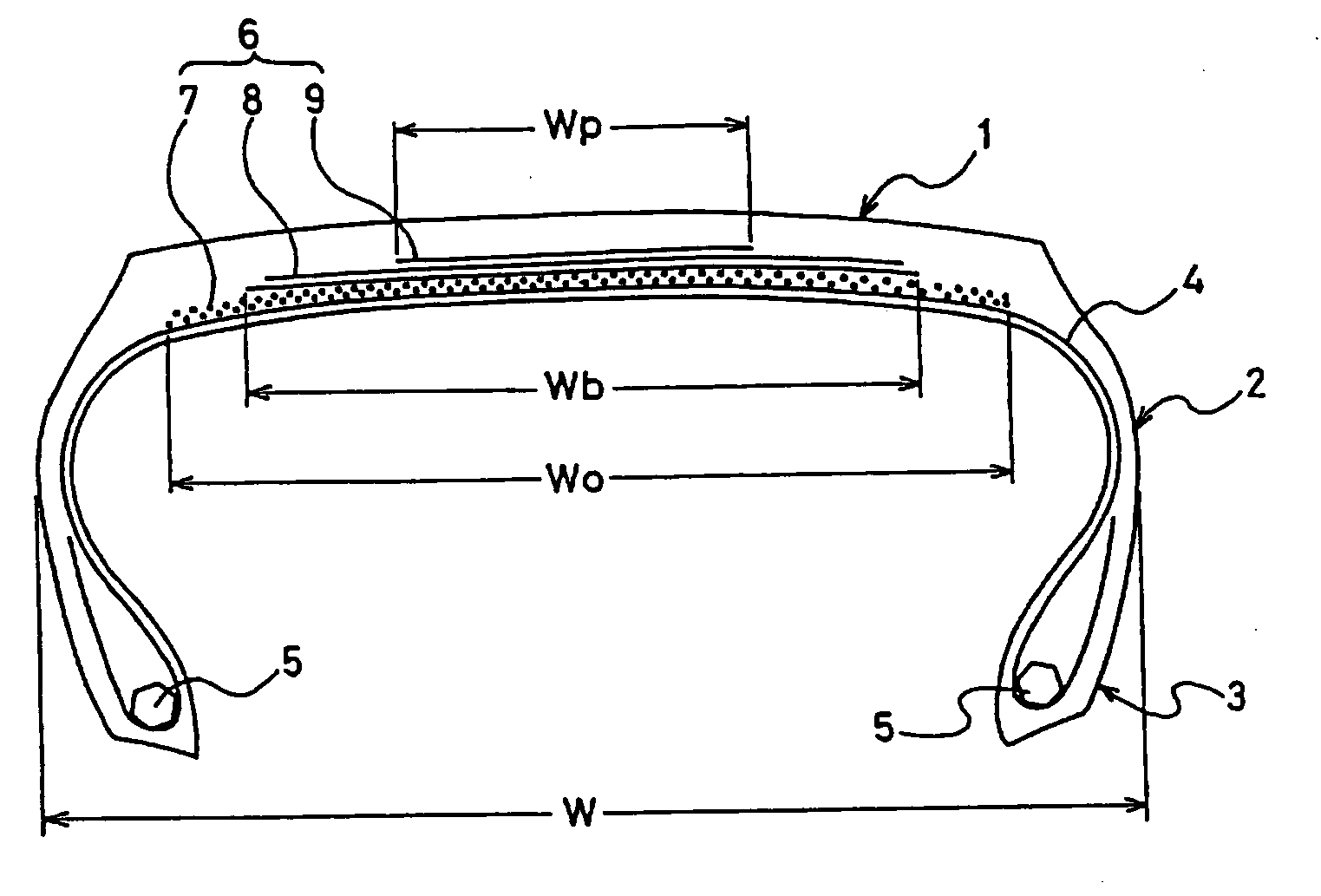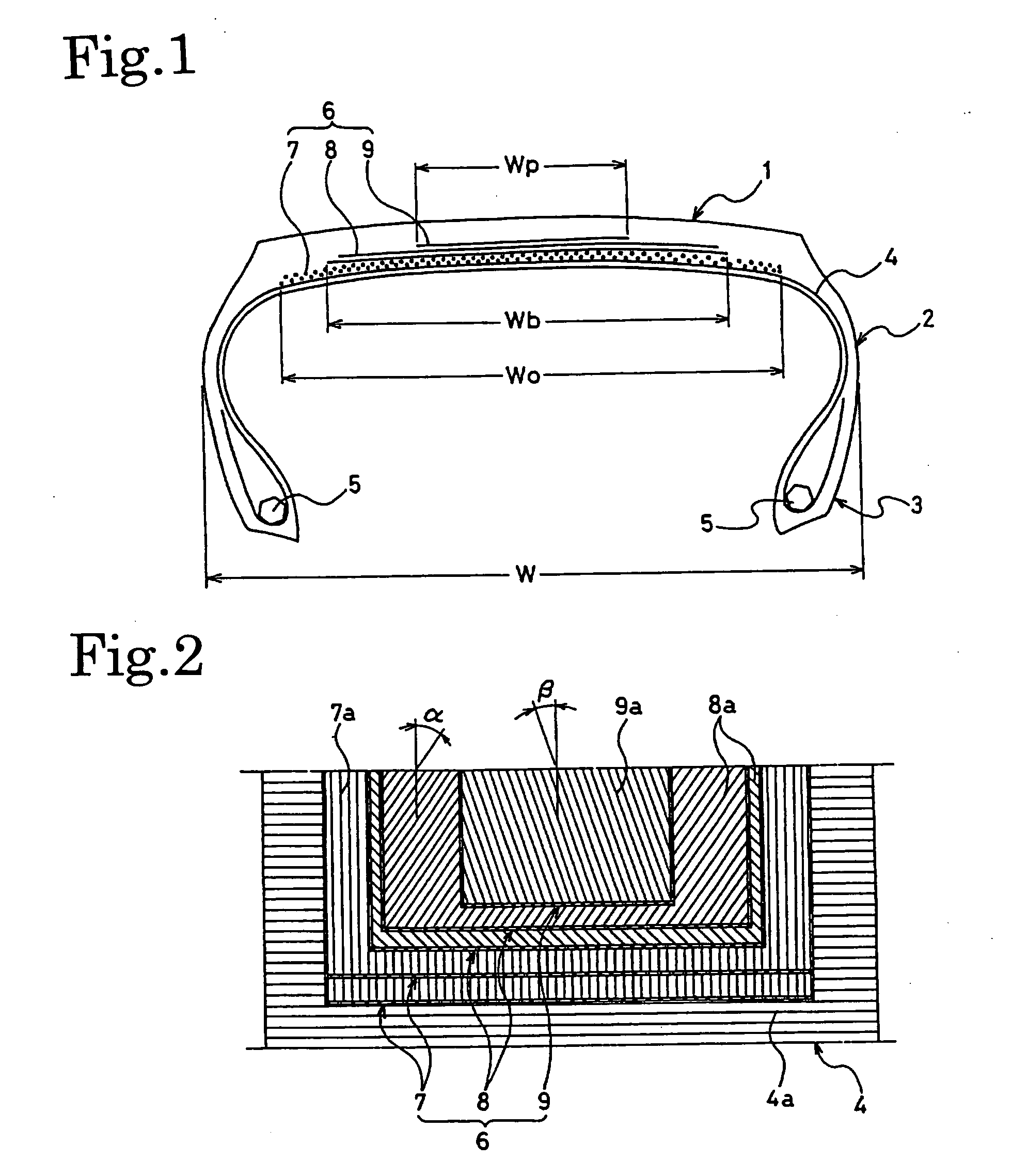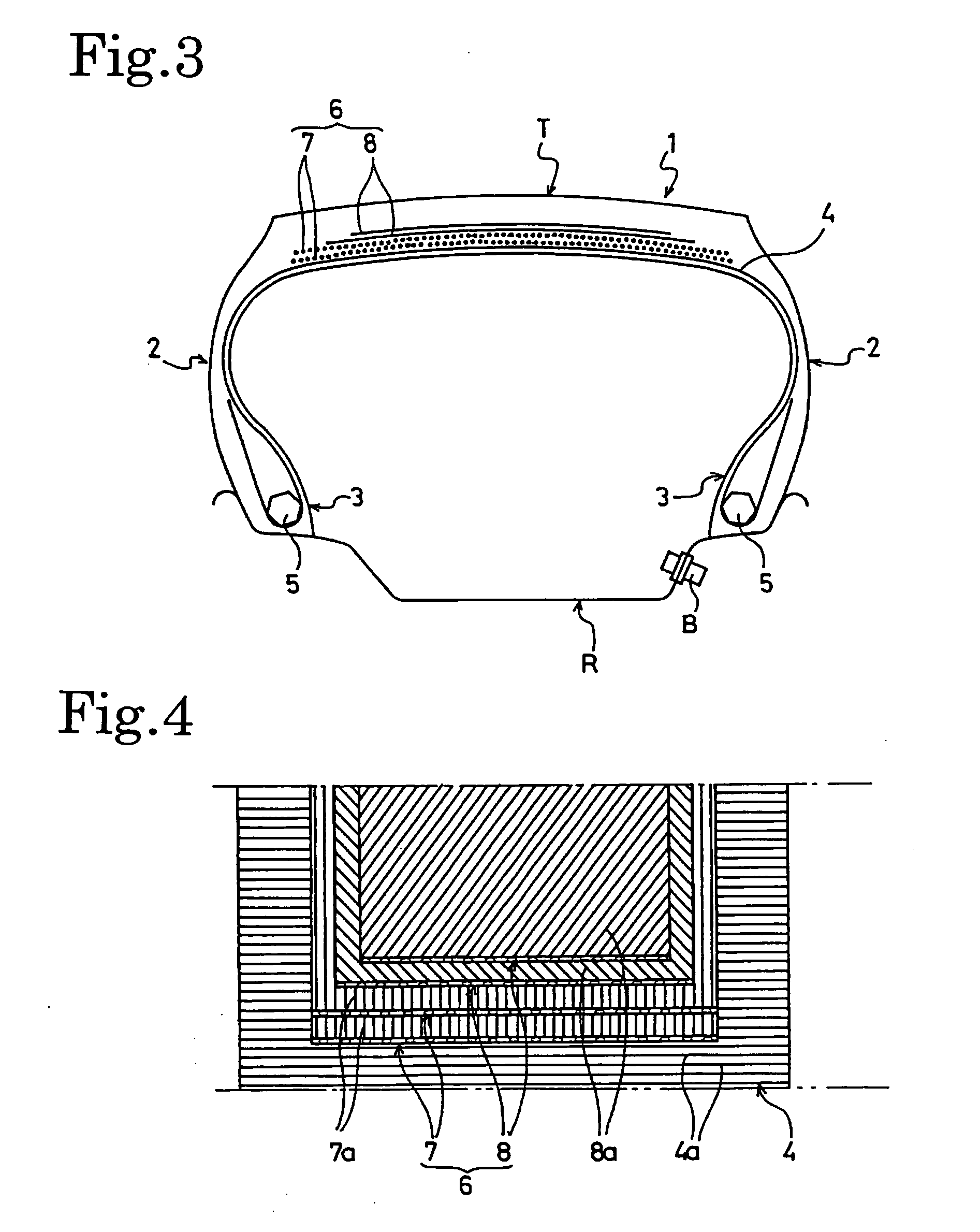Flat Heavy-Duty Pneumatic Radial Tire and Method of Manufacturing the Same
a pneumatic radial tire and heavy-duty technology, applied in the field of flat heavy-duty pneumatic radial tire, can solve the problems of tire wear, tire durability and partial wear resistance deterioration, and tire wear partial wear, so as to improve durability and drive stability.
- Summary
- Abstract
- Description
- Claims
- Application Information
AI Technical Summary
Benefits of technology
Problems solved by technology
Method used
Image
Examples
example 1
[0050]
First Layer (0-degree Belt Layer)Belt Width:75% of the tire total width WCord Angle:0°Cord Structure:3 × (1 + 5) × 0.25 mm, 25 ends / 50 mmSecond Layer (0-degree Belt Layer)Belt Width:75% of the tire total width WCord Angle:0° C.Cord Structure:3 × (1 + 5) × 0.25 mm, 25 ends / 50 mmThird Layer (Bias Belt Layer)Belt Width:53% of the tire total width WCord Angle:50° (inclined left)Cord Structure:3 + 9 × 0.22 mm, 21 ends / 50 mmFourth Layer (Bias Belt Layer)Belt Width:48% of the tire total width WCord Angle:50° (inclined right)Cord Structure:3 + 9 × 0.22 mm, 21 ends / 50 mm
example 2
[0051]
First Layer (0-degree Belt Layer)Belt Width:75% of the tire total width WCord Angle:0° C.Cord Structure:3 × (1 + 5) × 0.25 mm, 25 ends / 50 mmSecond Layer (0-degree Belt Layer)Belt Width:75% of the tire total width WCord Angle:0°Cord Structure:3 × (1 + 5) × 0.25 mm, 25 ends / 50 mmThird Layer (Bias Belt Layer)Belt Width:53% of the tire total width WCord Angle:50° (inclined left)Cord Structure:3 × + 9 × 0.22 mm, 21 ends / 50 mmFourth Layer (Bias Belt Layer)Belt Width:48% of the tire total width WCord Angle:50° (inclined right)Cord Structure:3 + 9 × 0.22 mm, 21 ends / 50 mmFifth Layer (Bias Belt Layer)Belt Width:29% of the tire total width WCord Angle:20° (inclined right)Cord Structure:3 × 0.20 mm + 6 × 0.35 mm, 15 ends / 50 mm
example 3
[0052]
First Layer (0-degree Belt Layer)Belt Width:75% of the tire total width WCord Angle:0°Cord Structure:3 × (1 + 5) × 0.25 mm, 25 ends / 50 mmSecond Layer (0-degree Belt Layer)Belt Width:two belt layers each with a beltwidth of 25% of the tire totalwidth W being arrangedhorizontally with an interval of27% of the tire total width Win betweenCord Angle:0°Cord Structure:3 × (1 + 5) × 0.25 mm, 25 ends / 50 mmThird Layer (Bias Belt Layer)Belt Width:53% of the tire total width WCord Angle:50° (inclined left)Cord Structure:3 + 9 × 0.22 mm, 21 ends / 50 mmFourth Layer (Bias Belt Layer)Belt Width:48% of the tire total width WCord Angle:50° (inclined right)Cord Structure:3 + 9 × 0.22 mm, 21 ends / 50 mm
PUM
| Property | Measurement | Unit |
|---|---|---|
| equilibrium angle | aaaaa | aaaaa |
| angle | aaaaa | aaaaa |
| equilibrium angle | aaaaa | aaaaa |
Abstract
Description
Claims
Application Information
 Login to View More
Login to View More - R&D
- Intellectual Property
- Life Sciences
- Materials
- Tech Scout
- Unparalleled Data Quality
- Higher Quality Content
- 60% Fewer Hallucinations
Browse by: Latest US Patents, China's latest patents, Technical Efficacy Thesaurus, Application Domain, Technology Topic, Popular Technical Reports.
© 2025 PatSnap. All rights reserved.Legal|Privacy policy|Modern Slavery Act Transparency Statement|Sitemap|About US| Contact US: help@patsnap.com



